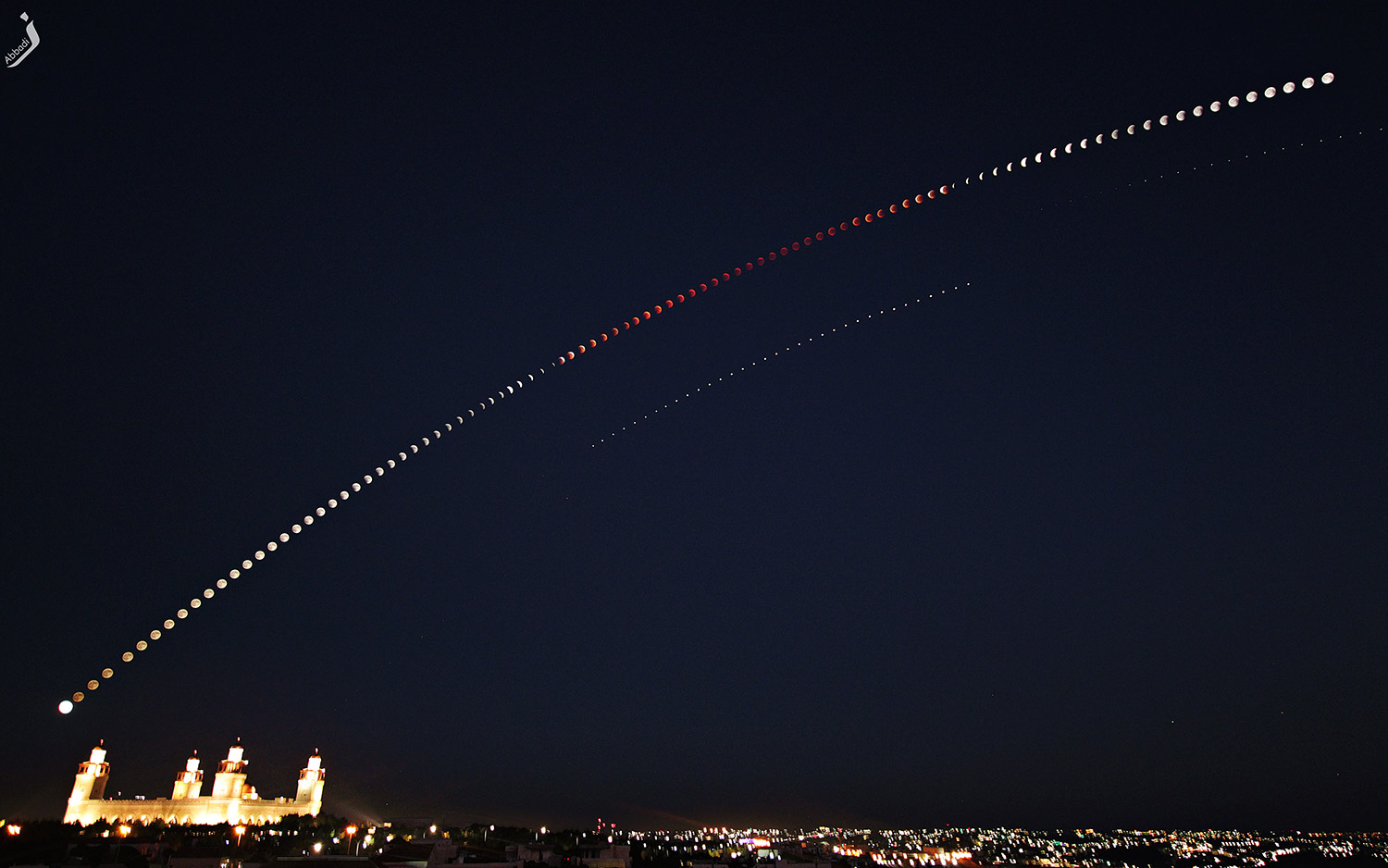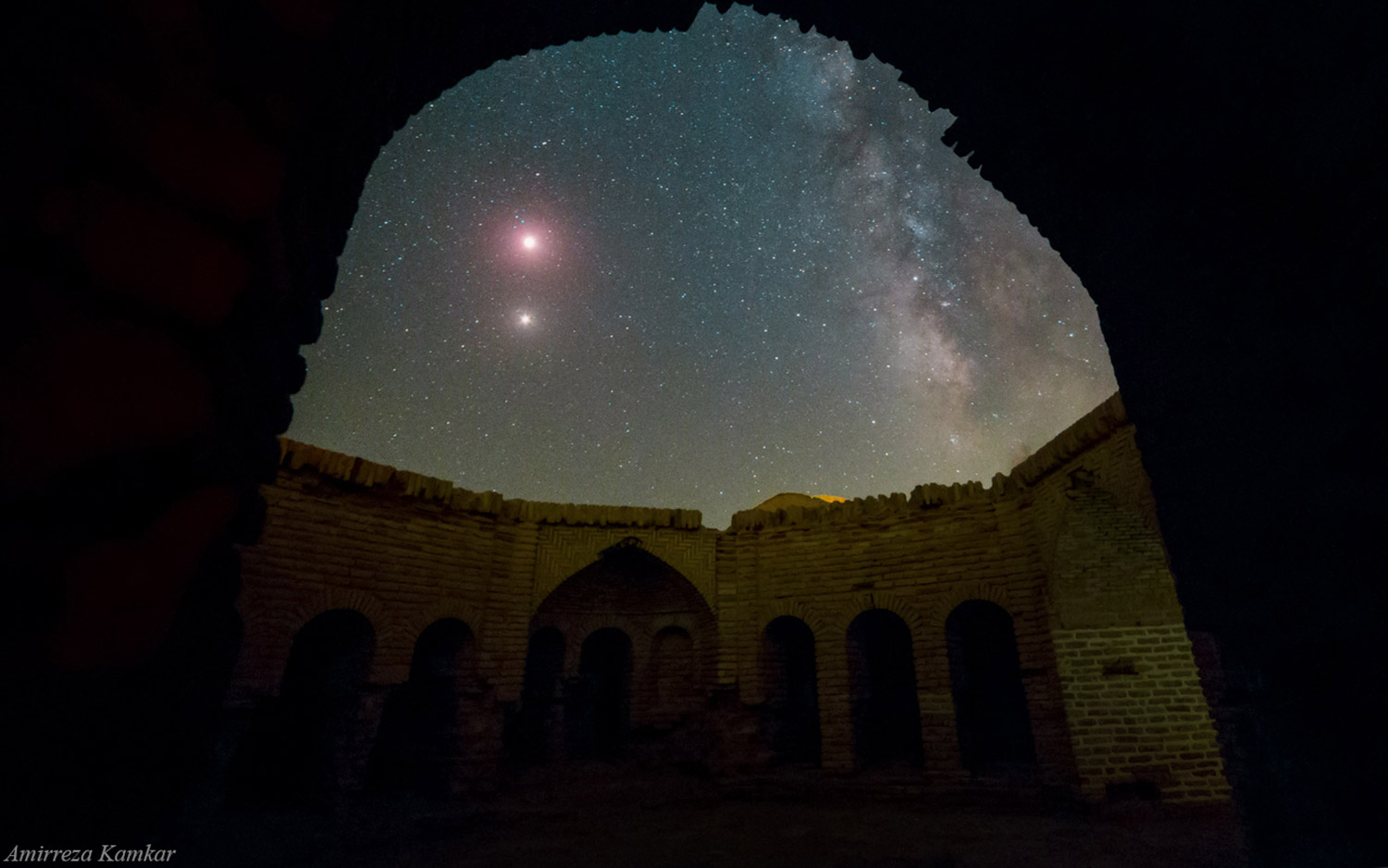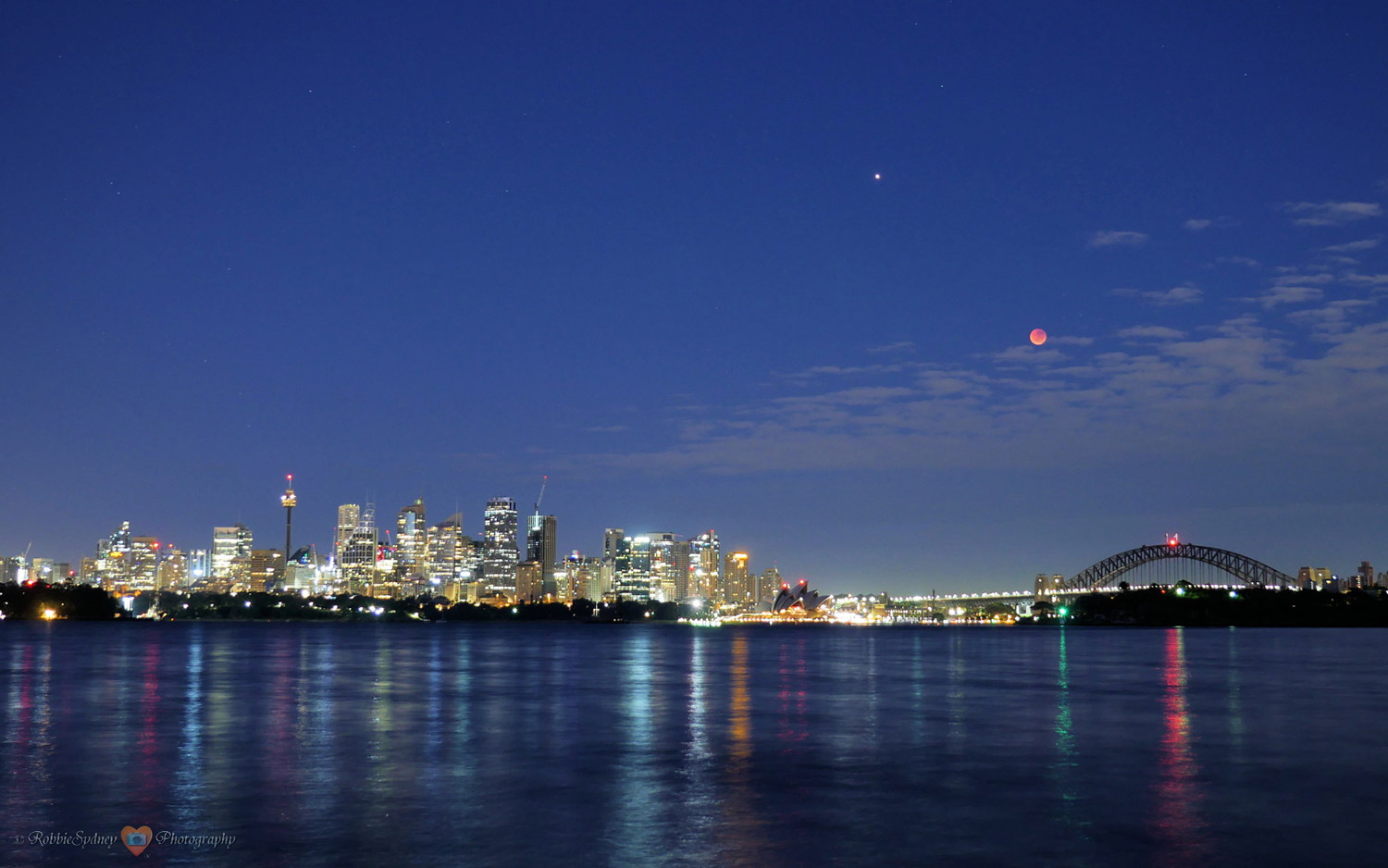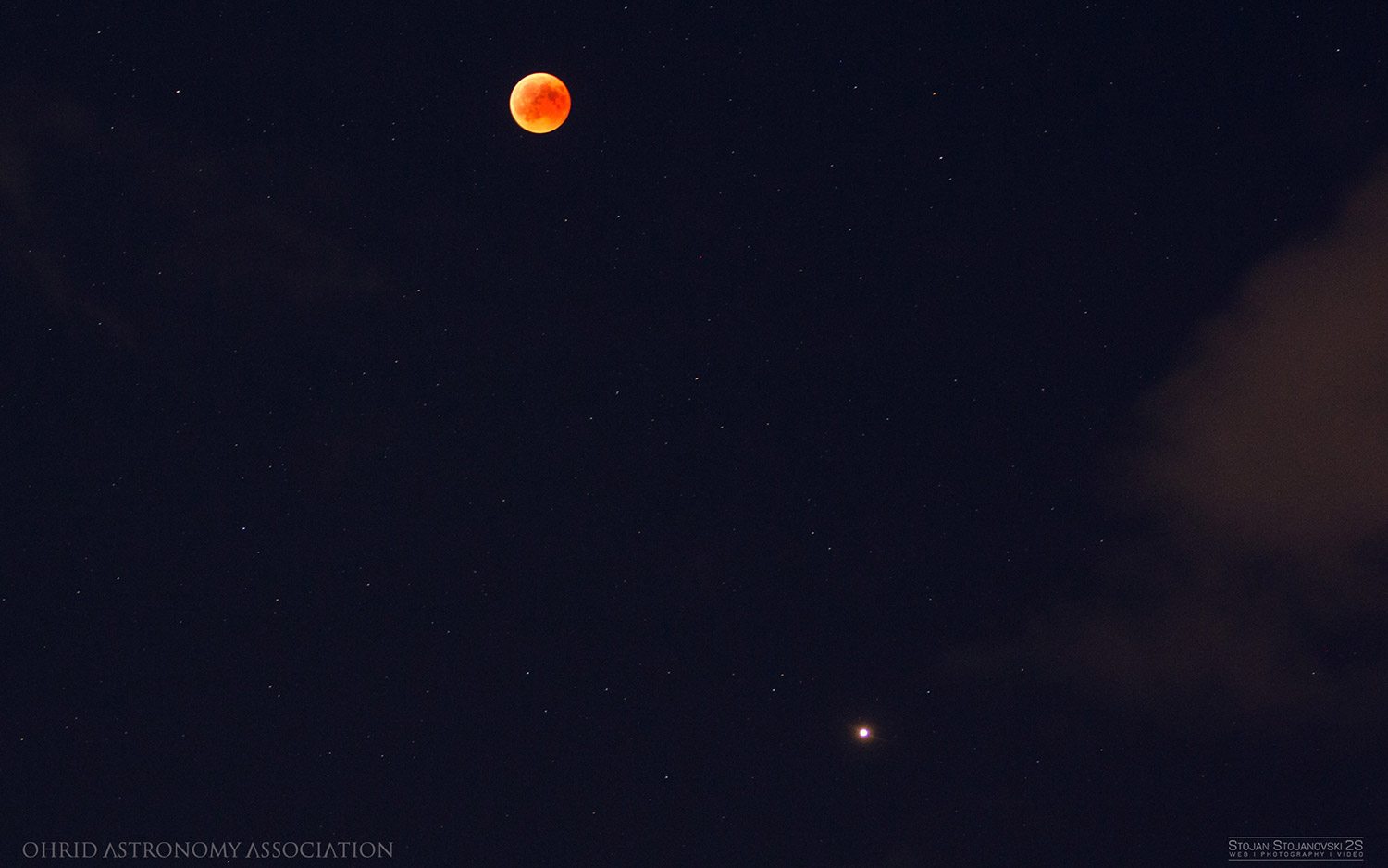Stargazers See Red: 'Blood Moon' Eclipse Meets Mars in Gorgeous Night-Sky Photos

On Friday (July 27), the moon turned blood red as it passed through Earth's shadow. Meanwhile, the Red Planet made its most stunning appearance in 15 years as it reached opposition, shining brightly in the sky alongside the "blood moon."
When Mars is at opposition, the planet is on the opposite side of Earth from the sun, with Earth in the middle, and the three objects form a straight line in space. Mars shines at its brightest during opposition, because more sunlight is reflecting off its surface and toward Earth than at any other point in its orbit around the sun. This time, Mars' opposition happened to coincide with perihelion, when it is closest to the sun. This so-called "perihelic opposition" made for some spectacular views of the Red Planet this weekend.
While Mars has been hogging everyone's attention in the night sky for the last few days, the Red Planet had some celestial competition on Friday when the longest lunar eclipse of the 21st century stole the show. Visible from most of the world — with the exception of North and Central America, where the moon was below the horizon — the moon spent 1 hour and 43 minutes passing through the center of Earth's dark shadow. [Amazing Photos: The 'Blood Moon' Eclipse and Mars Opposition of July 27, 2018]
Although the lunar eclipse may not have been visible to everyone, skywatchers around the world had the chance to enjoy at least one of the red celestial sights in the sky on Friday. Space.com readers who were lucky enough to see them both sent in some gorgeous photos to Space.com.
Amirreza Kamkar, an astrophotographer in Tehran, Iran, caught Mars snuggling up close to the eclipsed moon next to the starry core of the Milky Way galaxy. "This location has a rather dark sky, and [the] Milky Way was easily visible during the totality," Kamkar told Space.com. "Planet Mars at its brightest in 15 years was another attraction in the sky, just below the eclipsed moon."
In Sydney, Australia, photographer Robbie Pesiwarissa snapped a photo of Mars and the eclipsed moon above the Sydney Opera House. The two red objects in the sky line up almost perfectly with another bright-red light on top of the Sydney Harbour Bridge.
Astrophotographer Stojan Stojanovski got an even closer view of the moon and Mars using a 600-millimeter lens. He photographed the celestial pair from Ohrid, Macedonia, where he was enjoying the show with members of the Ohrid Astronomy Association, he told Space.com.
Breaking space news, the latest updates on rocket launches, skywatching events and more!
Don't miss these eclipses!
If you missed Friday's total lunar eclipse and are experiencing eclipse envy, don't worry — there's plenty more where that came from! Before the next lunar eclipse arrives on Jan. 20, 2019, eclipse fans can look forward to two solar eclipses.
The next eclipse (and last one of 2018) will be a partial solar eclipse on Aug. 11. Visible from parts of Asia and Europe, the moon will slide in front of the sun and will appear to have taken a bite out of the sun's disk. On Jan. 5 to 6, 2019, skywatchers in the north Pacific and northeast Asia can watch the moon pass in front of the sun once more. The world will finally see its next total solar eclipse on July 2, 2019, when the moon will completely block the sun and darken skies over most of South America.
The moon will steer clear of Earth's shadow until Jan. 19, 2019, when we'll see another total lunar eclipse. Those of us who missed out on Friday's "blood moon" in North America will have an excellent view of this total lunar eclipse, weather permitting.
Email Hanneke Weitering at hweitering@space.com or follow her @hannekescience. Follow us @Spacedotcom, Facebook and Google+. Original article on Space.com.

Hanneke Weitering is a multimedia journalist in the Pacific Northwest reporting on the future of aviation at FutureFlight.aero and Aviation International News and was previously the Editor for Spaceflight and Astronomy news here at Space.com. As an editor with over 10 years of experience in science journalism she has previously written for Scholastic Classroom Magazines, MedPage Today and The Joint Institute for Computational Sciences at Oak Ridge National Laboratory. After studying physics at the University of Tennessee in her hometown of Knoxville, she earned her graduate degree in Science, Health and Environmental Reporting (SHERP) from New York University. Hanneke joined the Space.com team in 2016 as a staff writer and producer, covering topics including spaceflight and astronomy. She currently lives in Seattle, home of the Space Needle, with her cat and two snakes. In her spare time, Hanneke enjoys exploring the Rocky Mountains, basking in nature and looking for dark skies to gaze at the cosmos.



